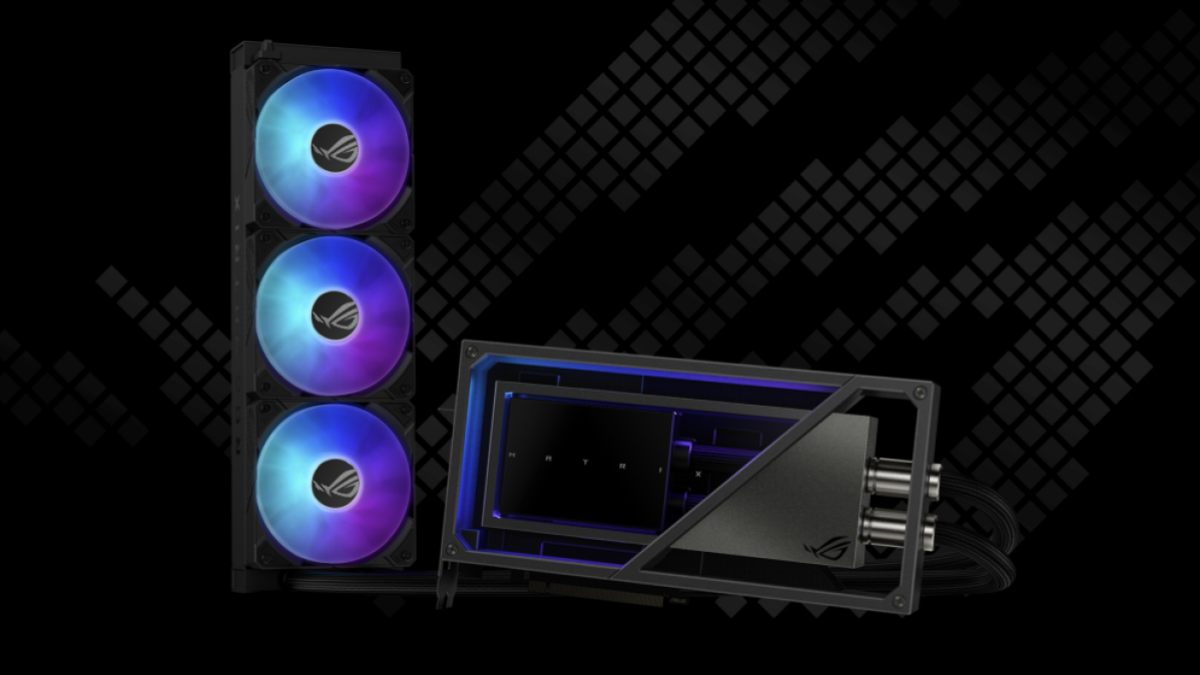[ad_1]
The seal has been broken. That is, the mysterious 4GHz seal, as no GPU has ever crossed this threshold. Though it’s still not something the average overclocker could pull off at home with mere liquid cooling, it’s still a significant milestone in the annals of GPU clock speeds. Perhaps one day, we will be able to cross 5GHz, but we’ll have to wait until 2025, when Nvidia’s next-gen GPUs arrive, to find out about that. It should also be pointed out that this barrier was broken not in PC gaming but in a compute benchmark, which is less stressful on the GPU. Still, it’s a notable achievement, as just passing 3GHz was a huge deal with previous-generation cards.
The overclocker who will go down in history is Allen ‘Splave’ Golibersuch, and we’ve written about his accomplishments previously. A week ago, Splave was tickling 4GHz on the same GPU, the ultra-premium Asus ROG Matrix card. He previously cranked it up to a painfully close 3.945GHz on liquid nitrogen. Now he’s been able to push it 60MHz higher, resulting in a 4,005MHz overclock. The hardware setup for this run was almost the same as on his previous attempt, though he did swap out the Corsair DDR5 memory for some sticks made by G.Skill.

GPU-Z verifies the uber clock at 4,005Mhz. Not too shabby.
Credit: Hothardware.com
As noted by Hothardware, there has been a ferocious overclocking race to 4GHz lately on the RTX 4090, with the only question being not when but who would get there first. In June, an overclocker named CENS was able to hit 3.93GHz, which was followed up by Splave’s 3.945GHz run linked above. Just a few days ago, CENS fought back with a clock speed of 3,975MHz, only to be dethroned just days later by Splave—who is probably CENS’ arch nemesis now, although we’re sure it’s a friendly rivalry. Whether or not CENS will go beyond 4,005MHz remains to be seen, but we doubt this latest overclocking run will settle the matter. Still, both overclockers are really on the outer edges of what seems possible with current technology.
To accomplish this feat, Splave used some expensive hardware. For example, the motherboard used was an ASRock Aqua OC Z690 board. This motherboard uses an older chipset, but it was priced at $1,149 when it launched, so it’s about as exclusive as a motherboard can get these days. An Intel Core i9-13900K was the CPU of choice, and 32GB of G.Skill DDR5 clocked at a modest 4,800MHz. The ROG Matrix GPU that was used still hasn’t been given a price, but since the previous RTX 2080 Ti version cost $1,900 and was air-cooled, we won’t be surprised to see this GPU go for around $2,500 when it finally launches.
[ad_2]
Source link

